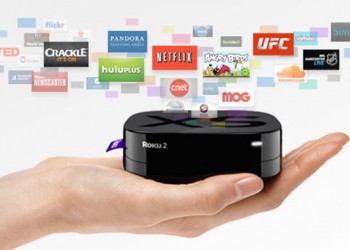More touchscreen and mobile devices, including cutting-edge solutions such as smartphones, tablets and hybrid or ultrabook laptops, are connected to the Internet than ever before. According to Harbor Research, in fact, there are now nearly 7 billion connected devices on the planet – almost as many gadgets as there are actual people. Ironically, while all are quickly transforming the way that customers interact with hardware, software and online tools, many so-called “smart” products weren’t designed to handle the growing complexity audiences from them. This presents two key challenges for consumer electronics manufacturers, technology leaders and app developers – the need to not only balance power and performance, but also pair skillful industrial design techniques with uniquely accessible user interfaces. Failure to do so can result in smart gadgets that are actually dumbfoundingly complex to utilize.
In other words, just because we can add new features to devices doesn’t mean doing so always provides the best experience possible, or adds to these gadgets’ appeal. To provide the best customer experience possible, sometimes it pays to keep it simple. As The Daily Mail recently noted, millions of TVs across the world now support Internet access, apps and streaming media. But only a minute percentage of customers actually utilize these options, as they’re used to interacting with devices in passive fashion, don’t recognize the upsides of connected options, and – most importantly – find the features strikingly complex and confusing. The lesson to be learned here: When creating for modern consumers, it’s vital to streamline processes and lighten learning curves, removing the amount of steps, actions and up-front research needed to appreciate such extras. Failure to do so results in a concept we call science friction, where the inclusion of new features designed to be additive to the experience actually detracts from overall usability and consumer enjoyment.
As is growingly obvious, the human elements of technology matter as much as actual devices and feature readouts. Case in point: While less technically capable than many Android-powered rivals, Apple’s iPhone and iPad routinely outsell better-equipped performers, due to their ease of use and acceptable feature set, which provide more practical benefits, less fancy bells and whistles. When creating products, software or services for modern high-tech users, as a business owner, it’s imperative to think long and hard about usage habits and consumption patterns. Before simply adding features for the sake of doing so, ask yourself how they can truly enhance the overall experience of using the device – and how you can create value in such a way that’s intuitive to your audience. Understand that the need for customer education can also have an impact on uptake as well: It’s crucial to convey products’ and services’ core value proposition at a glance, and make supporting features simple to comprehend and access.
Design devices in such a way as to not only showcase key additions, and quickly convey their upsides. Also build them so as to minimize the amount of hassle required to quickly dive in and enjoy these options. Eliminate all non-essential action steps and user requirements from the equation, and focus on rapidly capturing your audience’s attention, prompting it to take desired actions and allowing users to enjoy and interact with key features and benefits with a minimum of fuss. Designing with users’ best interests and impactful additions in mind first, novelties and extras likely to be enjoyed by only a fraction of owners second, and you’ll maximize return on your investment, minimize distraction, and – most importantly – dramatically boost your odds of success.














